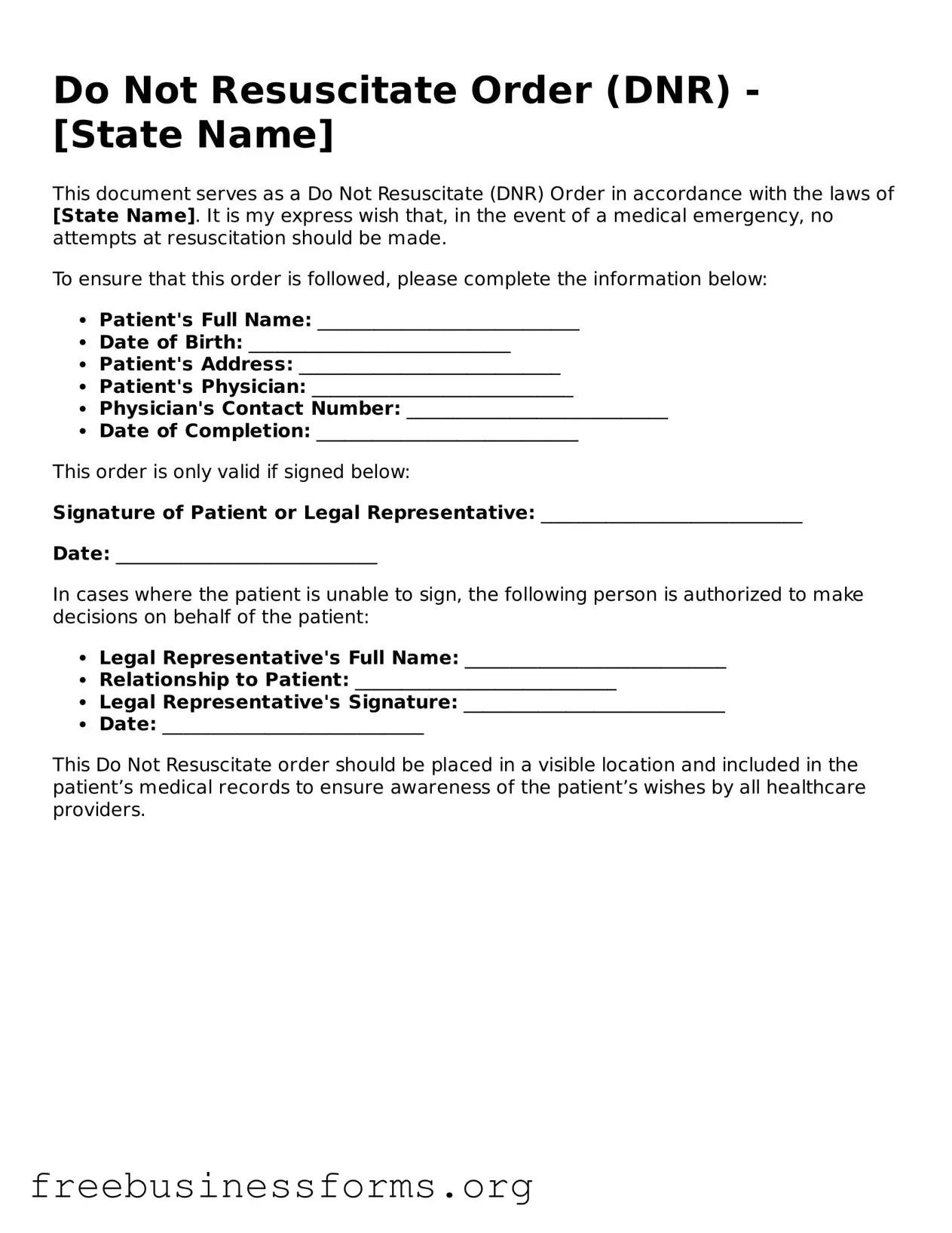Do Not Resuscitate Order (DNR) - [State Name]
This document serves as a Do Not Resuscitate (DNR) Order in accordance with the laws of [State Name]. It is my express wish that, in the event of a medical emergency, no attempts at resuscitation should be made.
To ensure that this order is followed, please complete the information below:
- Patient's Full Name: ____________________________
- Date of Birth: ____________________________
- Patient's Address: ____________________________
- Patient's Physician: ____________________________
- Physician's Contact Number: ____________________________
- Date of Completion: ____________________________
This order is only valid if signed below:
Signature of Patient or Legal Representative: ____________________________
Date: ____________________________
In cases where the patient is unable to sign, the following person is authorized to make decisions on behalf of the patient:
- Legal Representative's Full Name: ____________________________
- Relationship to Patient: ____________________________
- Legal Representative's Signature: ____________________________
- Date: ____________________________
This Do Not Resuscitate order should be placed in a visible location and included in the patient’s medical records to ensure awareness of the patient’s wishes by all healthcare providers.
